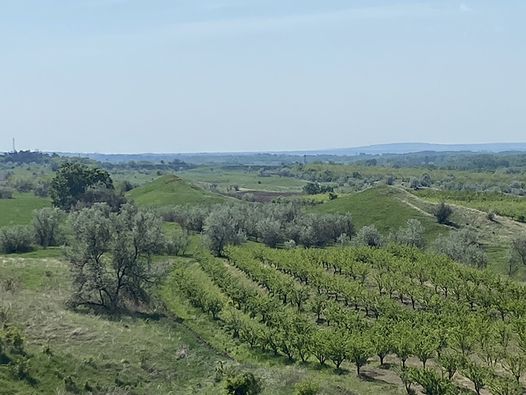One Hundred Mounds
Description
The natural monument "One hundred mounds" is located between the villages of Cobani and Braniște. It represents a hilly landscape along the Prut and occupies six terraces near the Prut. It is the only place in Europe, where the sediments of the ancient seas, which once bathed this territory - the Tortonian and Sarmatian Seas - are concentrated. Thus, according to one version, this relief was formed 10-20 million years ago. Other scholars say that this natural phenomenon was formed by landslides and washouts, which tore away the rocks that formed the hills, and by floods, which gave the hills their shape.
Actual studies began to be published after 1927, but for the first time this phenomenon was reported by Dimitrie Cantemir in his work "Description of Moldavia" (1716), calling this area "Centum Monticuli". In general, this valley has spawned a lot of legends and myths, which the locals believe in to this day. According to some of them, the Geto-Dacians are buried here. These hills look very much like the mounds, erected by the invaders of these places in ancient times, burying their soldiers there.
From the name "One hundred mounds" we can conclude that there are 100, but in reality, there are many more. According to some estimates, there are more than 3500. All the mounds are located in a sector of more than 8 km long and 1.7 to 2.3 km wide.
The height of the mounds ranges from 3-5 to 60 m. The territory between the mounds is complemented by dozens of picturesque lakes, springs with crystal clear water. In general, the territory is a serene landscape covered with rich steppe vegetation.
The highest mound is located at the intersection of three roads and is 60 m high. It is called the 'Gypsy Mound', where, according to legend, a pitcher of gold coins is buried. It is from here that this monument to nature is best seen, especially in the afternoon or evening, when the sun is out of sight and does not hinder photography.


 ro
ro
 ru
ru
